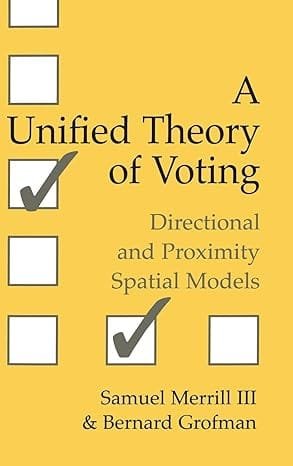A Unified Theory Of Voting: Directional And Proximity Spatial Models
Author: Samuel Merrill , Bernard Grofman
This book addresses the questions: how do voters use their own issue positions and those of candidates to decide how to vote?
Language: English
Publisher: Cambridge University Press
Binding Type: HAND COVER
Number of Pages: 230
MRP: 3985 INR
Your Price: ₹3,587.00

Related products
-
Non-fiction
Art & Architecture – Renaissance Art
Rated 0 out of 5₹180.00Original price was: ₹180.00.₹165.00Current price is: ₹165.00.
A Unified Theory Of Voting: Directional And Proximity Spatial Models
This book addresses the questions: how do voters use their own issue positions and those of candidates to decide how to vote? Does a voter tend to choose the candidate who most closely shares the views of the voter or rather a candidate who holds more extreme views due to the fact that the voters discount the candidates’ abilities to implement policy. The authors develop a unified model that incorporates these and other voter motivations and assess its empirical predictions – for both voter choice and candidate strategy – in the US, Norway, and France. The analyses show that a combination of proximity, direction, discounting, and party ID are compatible with the mildly but not extremely divergent policies that are characteristic of many two-party and multiparty electorates. All of these motivations are necessary to understand the linkage between candidate issue positions and voter preferences.











Reviews
There are no reviews yet.